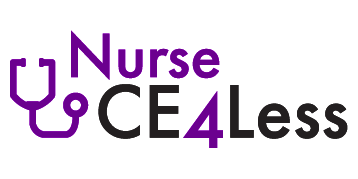Course Summary
There are many forms of drug diversion. As the availability and scope of prescription drugs have expanded to include a range of opiates, non-opiate depressants, stimulants, and potent cold medicines, so too have the misuse and the recreational use of these substances. It is important for all members of the interdisciplinary health team, including prescribers, pharmacists, and nursing staff, to be aware of the different strategies for drug diversion, as well as the common characteristics of patients or coworkers with a substance use disorder. There are also preventative measures that healthcare facilities and clinicians may or must use to help reduce the incidence of drug diversion. These include organizational policies mandated by the U.S. Department of Justice and the Drug Enforcement Administration (DEA), prescription drug monitoring programs, Federal guidelines for proper storage and security regarding controlled substances, and guidelines for ordering, prescribing, preparing, and dispensing prescription drugs or controlled substances.
Course Format
Homestudy
Course Syllabus
- Introduction
- Drug Diversion and the Scope of the Problem
- Drug Diversion and Commonly Diverted Drugs
- Common Forms of Drug Diversion
- Doctor Shopping
- Drug Diversion in Healthcare
- Drug-Seeking
- False or Altered Prescriptions
- Identifying Drug Diverters
- Profiles of Patients Who Divert Drugs
- Consequences of Not Identifying Drug Diverters
- Profiles of Healthcare Workers Who Divert Drugs
- Prevention Strategies
- Identifying Potential Drug Diversion
- Monitoring Systems
- Organizational Policies
- Storage and Security
- Inventory Maintenance
- Waste Disposal
- Responding to Drug Diversion in the Workplace
- Mandatory Reporting and Support for Recovery
- Literature Review: Deception and Drug Diversion
- Case Study: Heroin Substance Use
- Summary
Authors
Noah H. Carpenter, MD
Dr. Noah Carpenter is a Thoracic and Peripheral Vascular Surgeon. He completed his Bachelor of Science in chemistry and medical school and training at the University of Manitoba. Dr. Carpenter completed surgical residency and fellowship at the University of Edmonton and Affiliated Hospitals in Edmonton, Alberta, and an additional Adult Cardiovascular and Thoracic Surgery fellowship at the University of Edinburgh, Scotland. He has specialized in microsurgical techniques, vascular endoscopy, laser and laparoscopic surgery in Brandon, Manitoba and Vancouver, British Columbia, Canada and in Colorado, Texas, and California. Dr. Carpenter has an Honorary Doctorate of Law from the University of Calgary, and was appointed a Citizen Ambassador to China, and has served as a member of the Indigenous Physicians Association of Canada, the Canadian College of Health Service Executives, the Science Institute of the Northwest Territories, Canada Science Council, and the International Society of Endovascular Surgeons, among others. He has been an inspiration to youth, motivating them to understand the importance of achieving higher education.
Dana Bartlett, RN, BSN, MSN, MA, CSPI
Dana Bartlett is a professional nurse and author. His clinical experience includes 16 years of ICU and ER experience and over 27 years as a poison control center information specialist. Dana has published numerous CE and journal articles, written NCLEX material, textbook chapters, and more than 100 online CE articles, and done editing and reviewing for publishers such as Elsevier, Lippincott, and Thieme. He has written widely on the subject of toxicology and was a contributing editor, toxicology section, for Critical Care Nurse journal. He is currently employed at the Connecticut Poison Control Center. He lives in Wappingers Falls, NY.
Allison Russo, DNP, PMHNP-BC
Allison Russo has been working in the field of psychiatry since 2009. She has enjoyed experience working in outpatient, forensics, residential and acute care settings. She has had the honor of treating Sailors across the United States and the world, serving in the Navy Reserve, since 2013. She enjoys working with clients across the lifespan. She completed her Bachelor of Science in Nursing in 2009 and Master of Nursing in 2013 at Montana State University. She obtained her Doctor of Nursing Practice from the University of North Dakota in 2016. She is passionate about collaborating with families to provide support and solve complex problems. She is excited about the use of technology, and happy to use it, to improve access to mental health care. In her off time, she can generally be found working on a remodeling project, traveling, or at the local Crossfit gym. She loves spending time with her husband, her 5 year dog, and her son.

